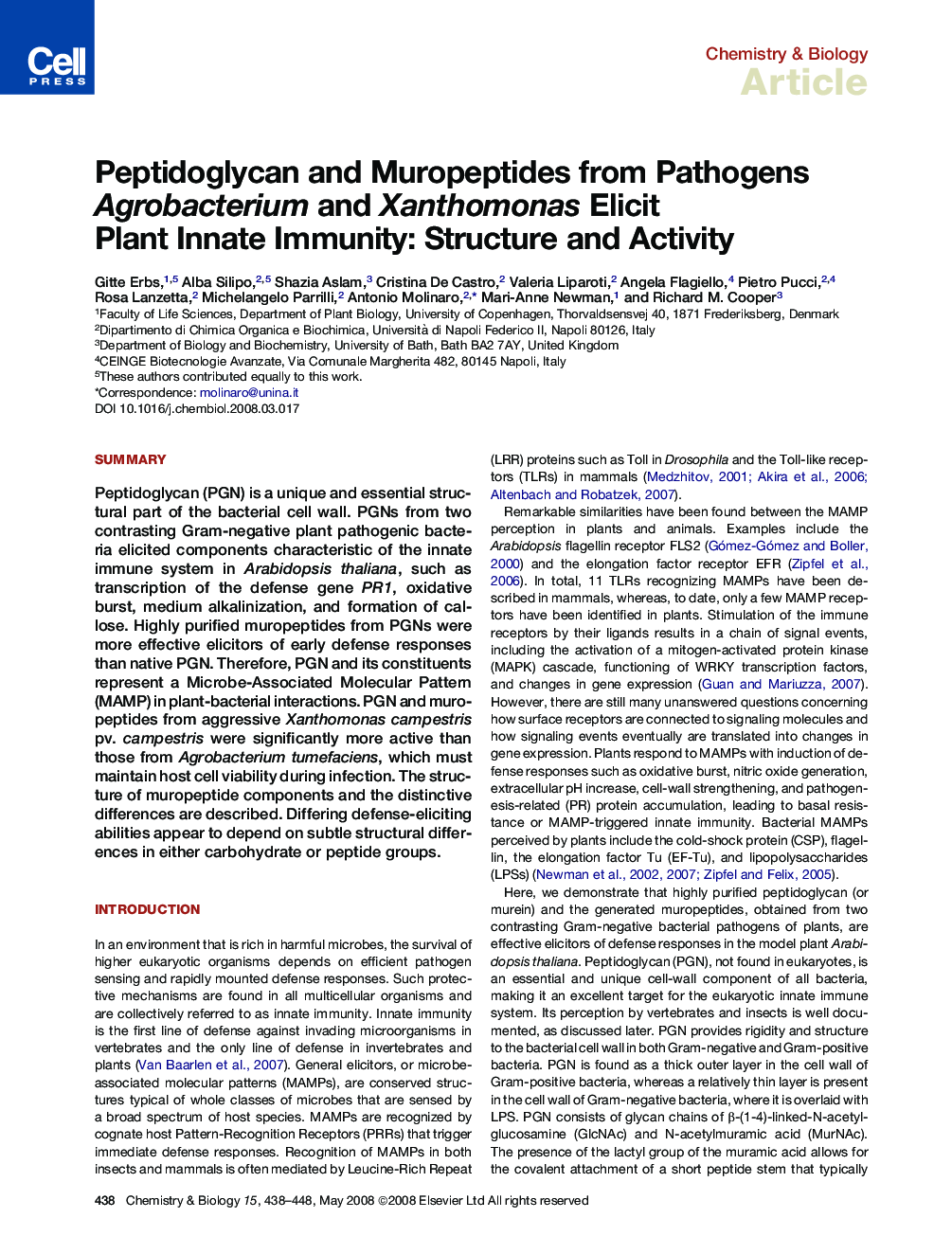| Article ID | Journal | Published Year | Pages | File Type |
|---|---|---|---|---|
| 1392768 | Chemistry & Biology | 2008 | 11 Pages |
SummaryPeptidoglycan (PGN) is a unique and essential structural part of the bacterial cell wall. PGNs from two contrasting Gram-negative plant pathogenic bacteria elicited components characteristic of the innate immune system in Arabidopsis thaliana, such as transcription of the defense gene PR1, oxidative burst, medium alkalinization, and formation of callose. Highly purified muropeptides from PGNs were more effective elicitors of early defense responses than native PGN. Therefore, PGN and its constituents represent a Microbe-Associated Molecular Pattern (MAMP) in plant-bacterial interactions. PGN and muropeptides from aggressive Xanthomonas campestris pv. campestris were significantly more active than those from Agrobacterium tumefaciens, which must maintain host cell viability during infection. The structure of muropeptide components and the distinctive differences are described. Differing defense-eliciting abilities appear to depend on subtle structural differences in either carbohydrate or peptide groups.
